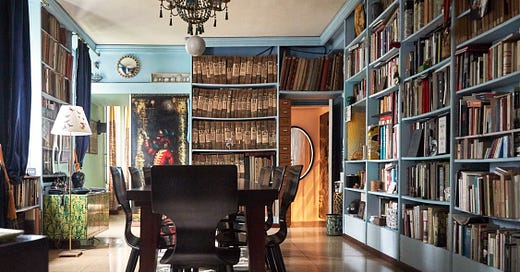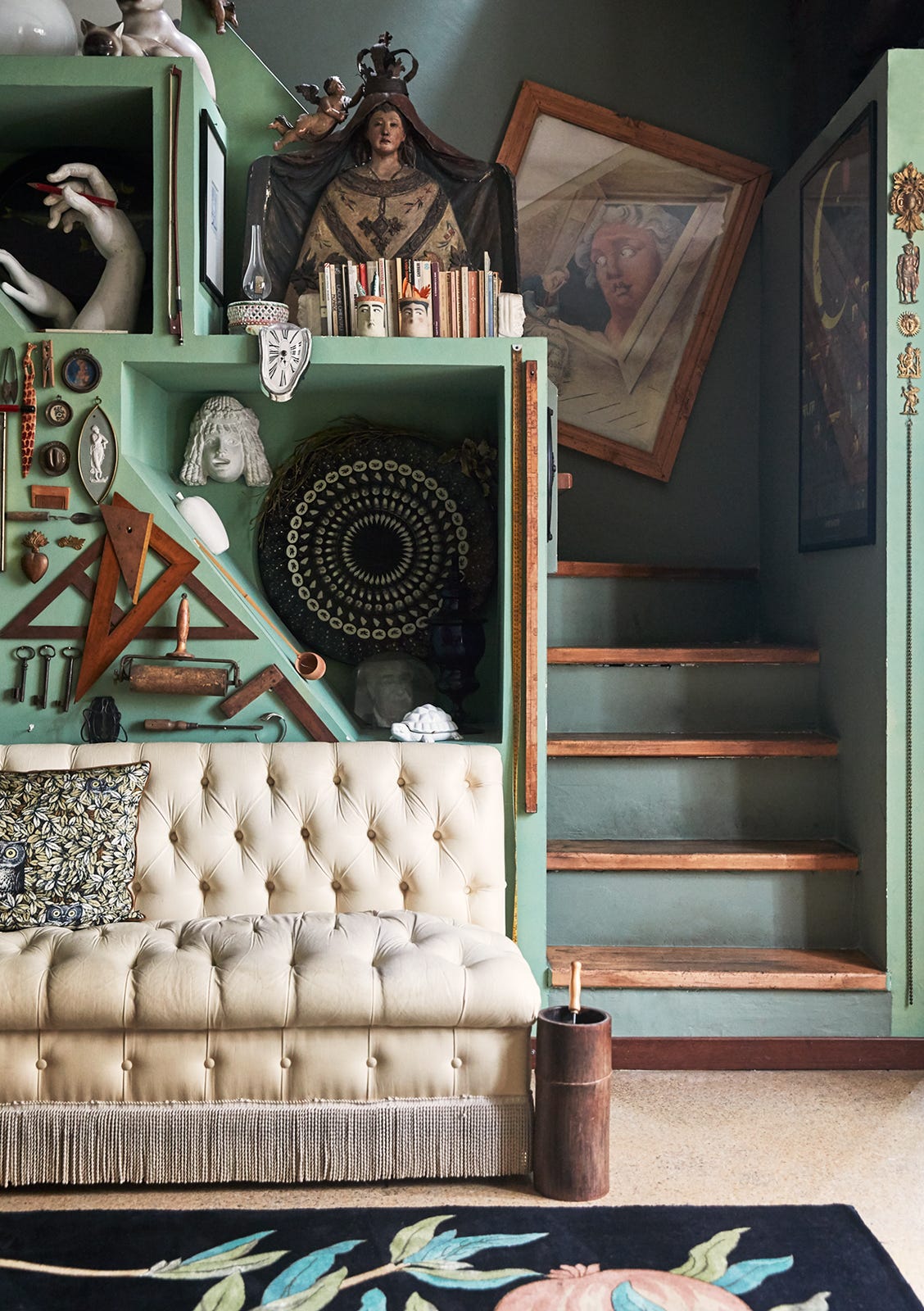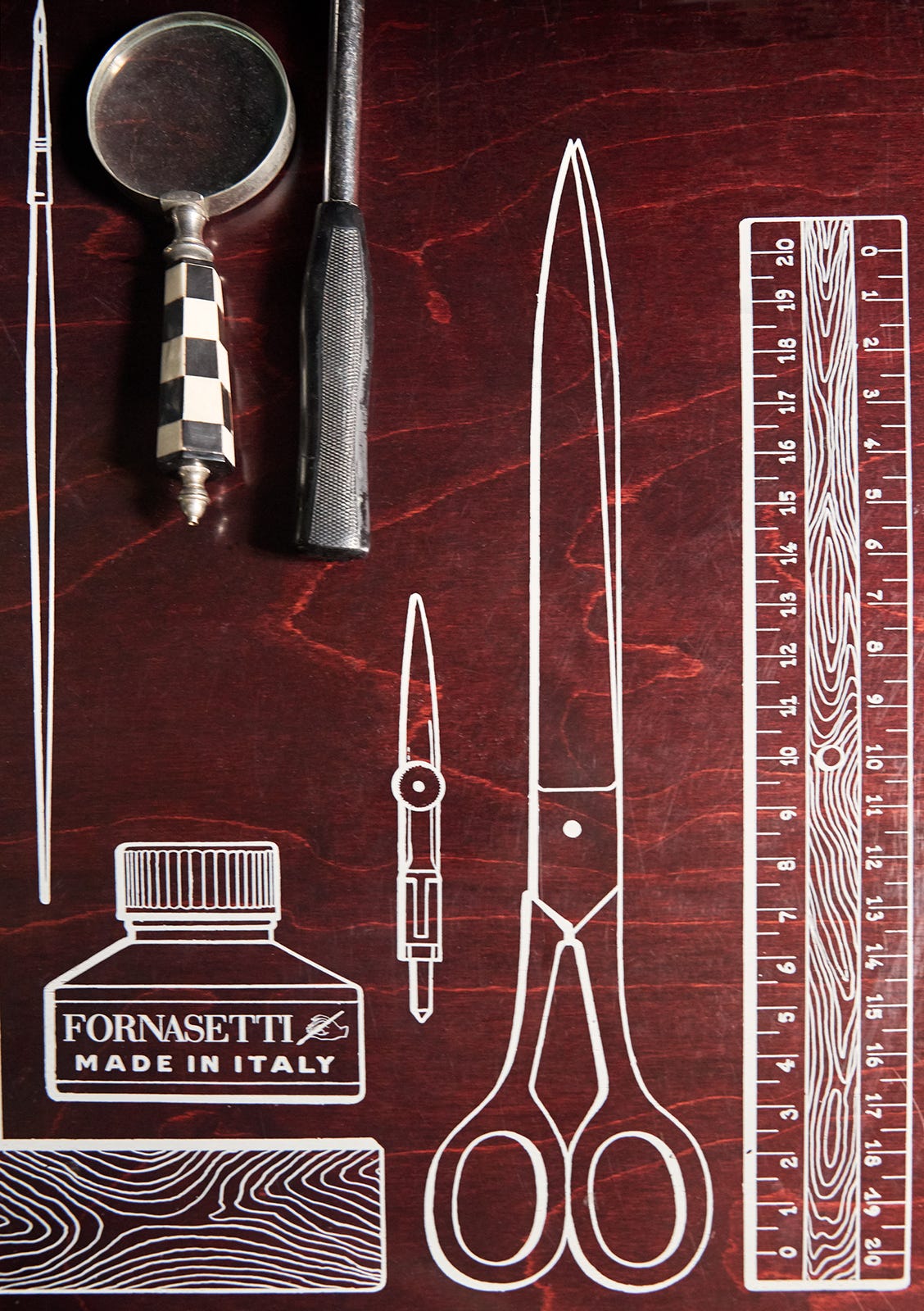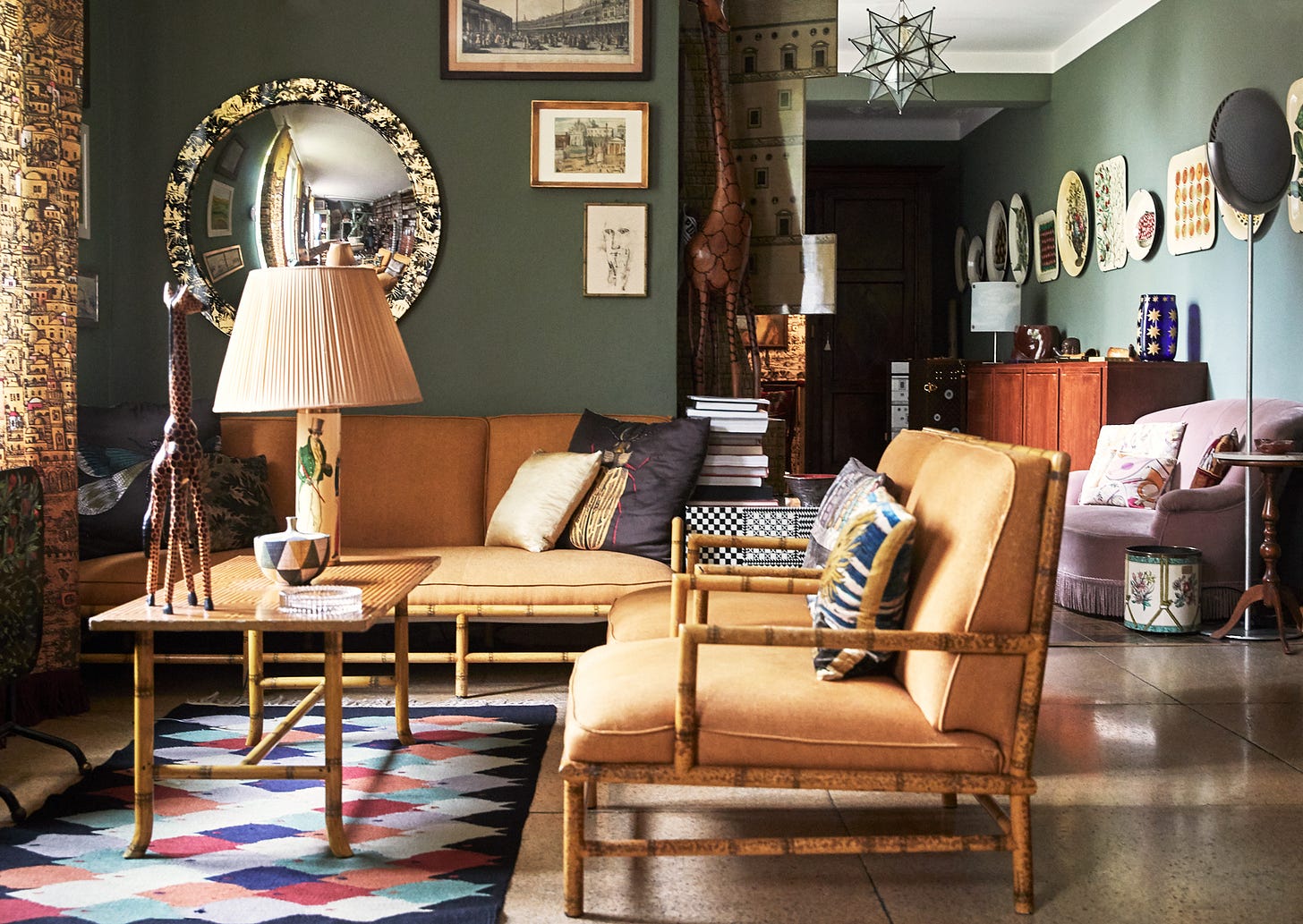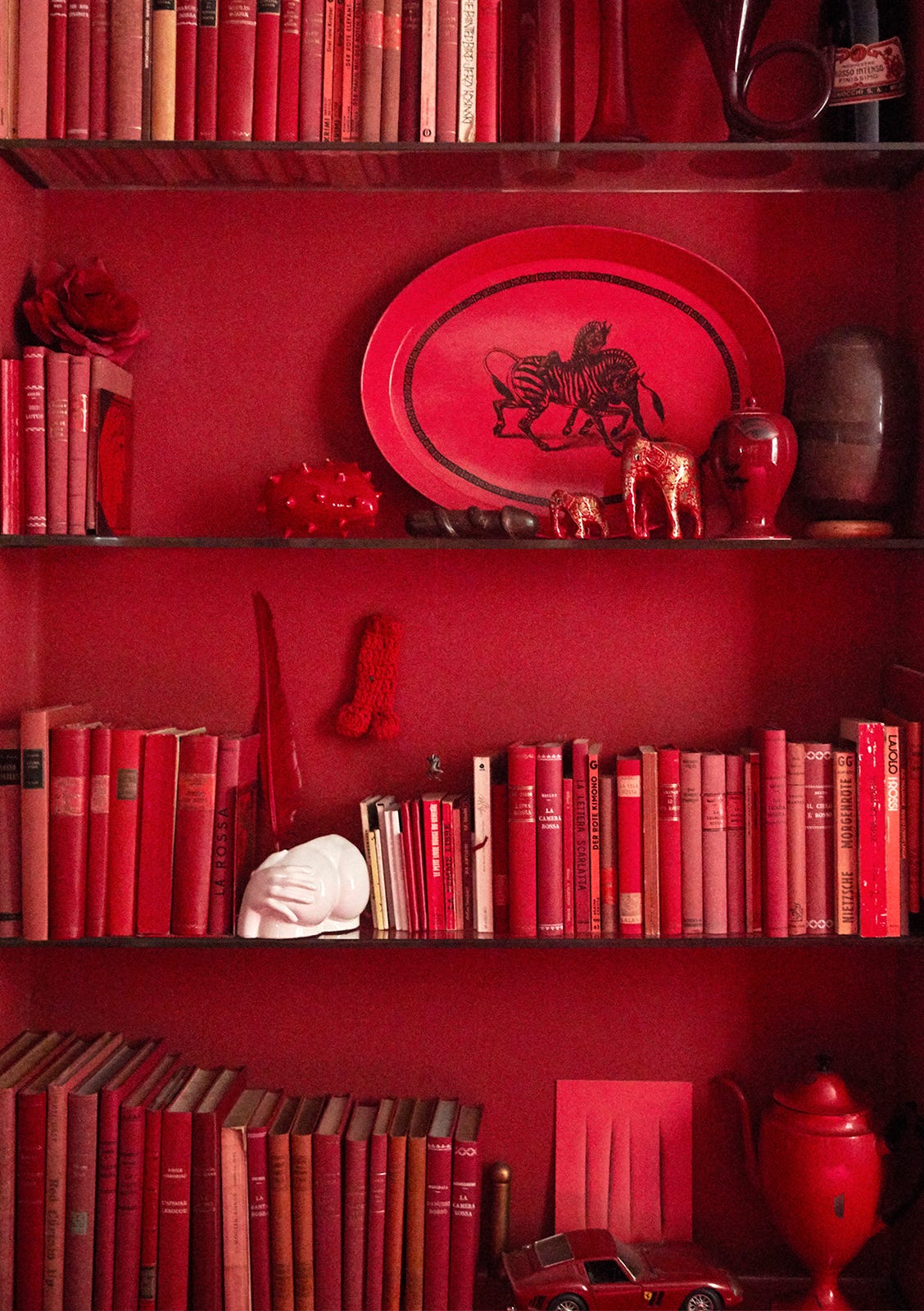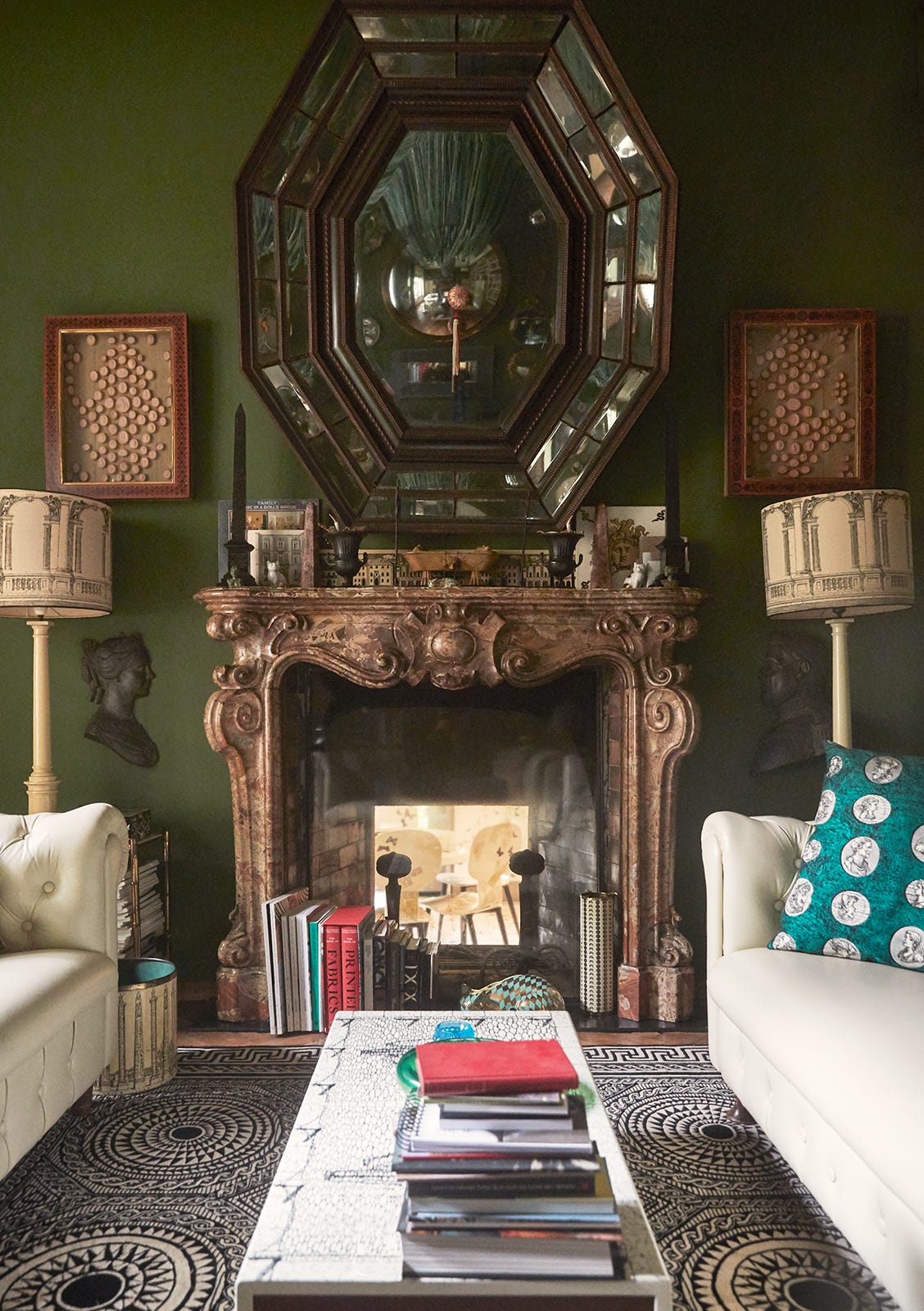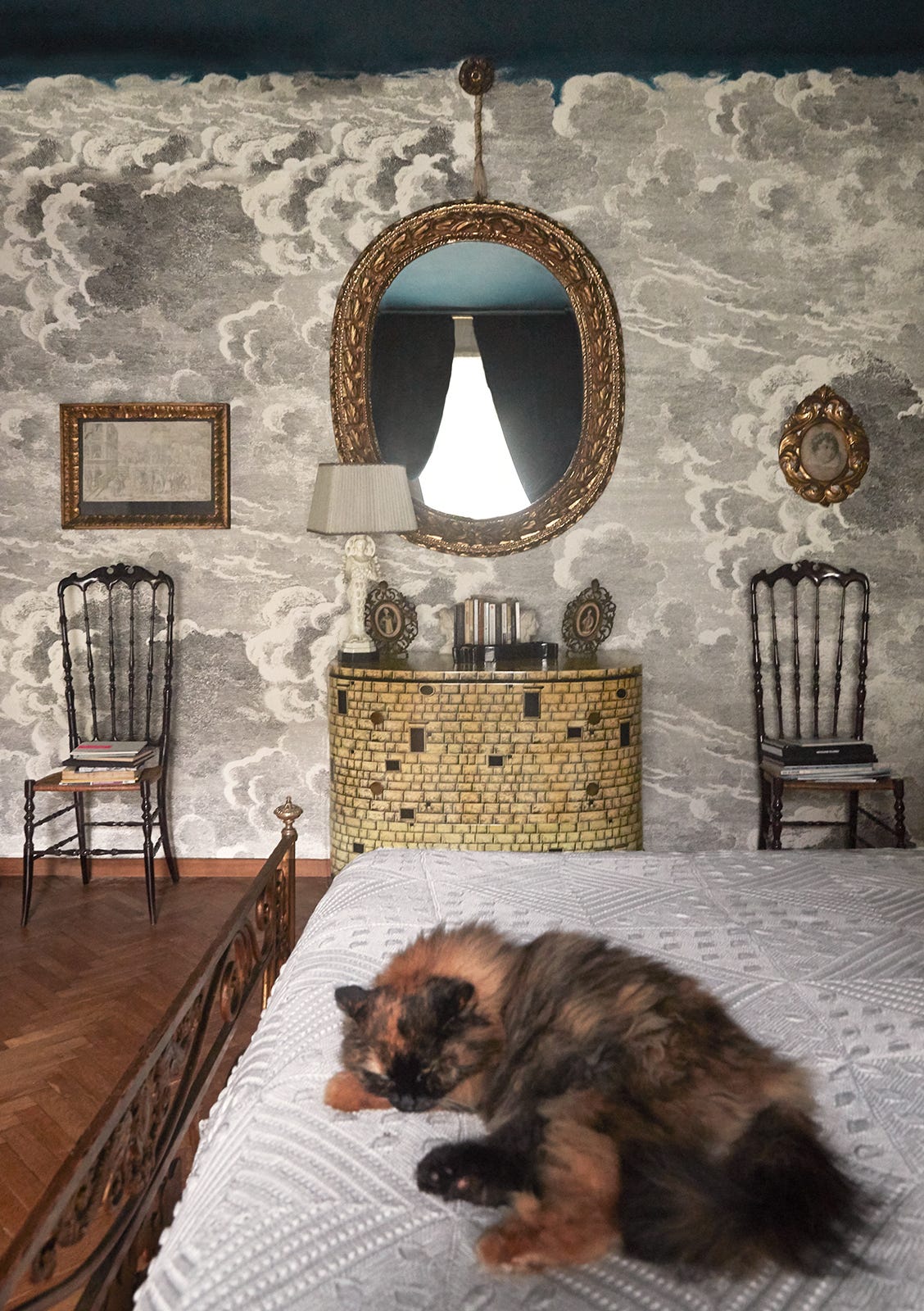A World of Symbols and Signs / A Meeting with Barnaba Fornasetti
We travelled to Milan for an exclusive conversation with Barnaba Fornasetti and visit to Casa Fornasetti
Design is about more than just function. A chair exists primarily so that people can sit, but the aesthetics of the chair can also evoke emotions. Simply put, beautiful things increase the quality of a person’s life.
This tenet is the core of Fornasetti's business concept. The products – including chairs, tables, coffee sets and umbrella stands – all have a clear function, but the design is playful and slightly quirky, making them noticeable features in any interior.
Founded by Piero Fornasetti in Milan in 1940, the brand’s universe is intertwined with the successive development of his creativity and life path.
A course in arts and crafts led him to start textile printing on silk fabric, while a period in a cramped internment camp in Switzerland made him develop his drawing skills, a technique best suited when working in a limited space.
One of the things that set Fornasetti apart from other design companies is the founder's slightly irreverent way of finding inspiration in cultural history. References are sampled, mixed and reworked, according to Fornasetti's whims and personal taste. Adam and Eve are recurring figures.
The opera singer Lina Cavalieri’s face – in her lifetime considered one of the world's most beautiful women – is difficult to separate from the Fornasetti brand. In many objects there is also an esoteric dimension; Fornasetti's interest in mysticism is communicated through symbols and signs.
SS Andrea Doria was one of the most mythical of modern ships. A luxury transatlantic ocean liner, its cabins designed in a zodiac theme through a collaboration between Fornasetti and Gio Ponti, put into service in 1953 only to sink three years later, leading to the death of several onboard as well as the loss of the interiors, today only available in old photos.
A few years before, the duo designed the Casinò di Sanremo, decorating its furniture and textile with hundreds of playing cards in varying sizes, but today forever lost due to careless renovations.
Thankfully, Casa Fornasetti remains intact, the heart and archive of the brand, where Piero Fornasetti’s ideas give his son and artistic director of the company, Barnaba Fornasetti, continuous inspiration to add new designs to the brand’s collection.
We met with Barnaba Fornasetti for an exclusive interview on creativity, travel, and working in a family business.
What are your thoughts on the role of beauty in everyday life?
I think beauty is necessary to live, and to better our existence. My goal is to spread the artistic messages of the Fornasetti creative language to as many people as possible, making beauty accessible to everyone.
Do you think some people are born with an aesthetic sense, like some people have a talent for language or mathematics, or can it be developed?
The aesthetic sense is a talent, but experience certainly helps to increase it.
Do you think you inherited your sense of style from your father?
Having lived surrounded by beauty since I was a child has certainly contributed to my aesthetic sense. I think of myself as the reflection of his incarnation. Reincarnation from father to son is not something you would say exists, maybe it’s better to speak of an extension.
Was also your mother aesthetically inclined?
Yes, she was. In fact, my parents met at the School of Applied Arts and even if my mother did not pursue a career as an artist, she was always at my father's side helping him with the Atelier activities.
What is it like working to develop your father’s design?
Carrying on what my father founded in 1940 and built over the years has been very natural for me. Of course, to inherit a project as personal and sophisticated as this one is not easy. My role is to extend the decoration concept he started without giving up my artistic personality, that’s why I decided to faithfully re-edit some of his best sellers, but also to do what I like to define “reinventions” where I use decorations taken and modified from the archive on new shapes and materials never used before.
Does it remind you of him, is it a way of keeping the memory of him alive? I imagine it must be quite emotional to be surrounded by his legacy and to have access to his archive.
He was obsessed with the idea of eternity, of having to go down in history, perhaps also for this reason he had organised his artistic succession, leaving a perfectly organised archive that allows me, (regardless of the fact that I may be his son) to continue his artistic activity and keep the memory of him alive.
The archive is the biggest inspiration I have ever had, and it contains thousands of images in it. I can access one of the most incredible archives that can be imagined; the most important treasure I have inherited.
What do you enjoy the most about your work?
The fact that I can always do different things.
How have you created your own place within the Fornasetti universe, adding your pieces to the ones designed by your father?
In addition to the reinventions, there are designs, collaborations, decorations, ideas and cultural initiatives conceived by me and by the team of people who continue the tradition today. Yet I believe that Fornasetti is a single story, a continuum of thought, people, ideas and events that cannot be divided, in which past and present are blended, each acting as a lens through which to observe the other.
What separates your work from his?
I would say that while Ponti and my father believed they could combine craftsmanship and creativity with the industry, then nascent in the field of design, making their creations accessible to a wider audience without quantity limits, nowadays I am forced to deal with the cost of labour. It is no longer possible to obtain quality at low cost and I would define this idea as utopian. So, due to force majeure, I had to create a limited production, believing more in qualitative growth than quantitative growth; although as Philippe Starck once told me, “From the outside, nobody nowadays could tell the difference between you and him”.
For those unfamiliar with Fornasetti, how would you describe the Fornasetti world?
I will reply to your question using a quote by Ettore Sottsass who wrote ”I believe that one day, when he was young, Fornasetti must have had a truly startling vision...he must have seen the whole world explode into the air, the whole world and all the accumulation of its figures, memories, the bodies and the monuments. Everything flew into the air and finished up in an infinite cloud that rose like a nuclear mushroom and then, slowly, began to descend, falling heavily – perhaps on Fornasetti’s head, or perhaps on his table or on his paintbrush. Everything was broken into pieces. But evidently the young man was not too fazed.... he walked without an umbrella, while the magic blizzard of the exploded world still fell slowly around him. While walking he gathered fragments from the earth as one might gather mushrooms in a wood, but he collected allusions, flashes of images, memories, sentences from unknown works and with all he gathered he would remake the entire world. He would suggest a beautiful new world that perhaps did not correspond to anything”.
Ultimately, the world of Fornasetti is a universe in and of itself.
What is the philosophy of the company?
My father summed up his philosophy in an interview: “An artist who wants to be successful is no longer an artist; he is a person who wants to have success. If he conforms to fashion, he will arrive late because by now everyone has already conformed. Therefore, perhaps, the idea is not to conform but to be original”.
I believe that more than a true Fornasetti philosophy, we can say that there is an aesthetic that can be reconciled with various life philosophies. The important thing is that there is a predisposition for beauty and for absolute freedom from prevailing aesthetic stereotypes.
What is the story of Casa Fornasetti?
First of all, let me say that Casa Fornasetti represents my life, my work, my interests and my philosophy, everything together.
It has been the historic home of my family since the late 19th century, and it was built by my grandfather. Modified and enlarged, it became the place where my family lived and where my father founded his atelier in the ‘40s. Piero focused the life of the house and its evolution around his artistic activity and the production of his objects. Nowadays the Casa is no longer a production site but a private residence, as well as the heart of Fornasetti’s creative and design activities.
Which is your favourite room?
I love all the rooms. Which one I’m using most depends on my mood or my state of mind, the weather, the light, whether I’m eating or listening to music or reading or working.
Do you have a favourite among the things your father designed?
Casa Lucano is an example of custom-made furniture, a good example that embodies the idea of custom made with an exceptional architect like Gio Ponti.
What is your favourite among your own designs?
I usually fall in love with my latest creation, the most recent thing I've done, that now is the trumeau “Riflesso di Architettura”, a one-off piece made of mirrored glass, meticulously hand-engraved and made in collaboration with Barbini, keeper of the prestigious Murano brand Barbini Specchi Veneziani. It is a piece that is both functional and highly artistic.
What do you enjoy doing when you’re not working?
I enjoy gardening, swimming, cuddling my cats, listening to music and spending time with the woman I love and my friends. However, in everything I do, there is always a relationship with my work. I can never completely switch off.
Fornasetti is closely associated with the city of Milan. Do you have a favourite spot in the city, perhaps a museum, a restaurant, or something else?
Yes, Fornasetti is a name historically linked to Milan, precisely to that city which was originally the heart of creative ideas and experiments which identified a happy union with the practical world of industry. Milan is the decorative city par excellence: a sampling of styles across all eras that you can see on the facades of buildings when walking around the city – it's just a shame that people walk and cycle less and less.
I have several favourite spots such as the Poldi Pezzoli Museum, the Latteria San Marco, the Biblioteca Ambrosiana, the church of San Satiro, the Cinema Arlecchino, Villa Simonetta or the Villa Reale gardens; they are all places full of history and where I have many fond memories.
Which part of the city do you enjoy the most (and why)?
I like the neighbourhood where I live, namely Città Studi, because it is still one of the few neighbourhoods in Milan that have not been overturned by the increase of tourism, while remaining a very lively area with many services given the presence of the Politecnico University.
Gio Ponti is also deeply interconnected with Milan, as well as with Fornasetti. What united him and Piero Fornasetti in their work?
Above all creativity, but also the desire to apply art to everyday objects and furnishings.
How would you describe the Fornasetti-Ponti relationship?
There was a very creative relationship between Ponti and my father, but it was just a very professional collaboration, and they addressed each other formally. Eventually Ponti adjusted to the fluctuating trends, while my father continued his path as a creative rebel indifferent to the fads of the moment.
Do you enjoy travelling? If so, what is a place you often return to?
I've always liked travelling but now I travel less than when I was younger. Not because I've lost the desire, but both because I have less time and because I don't think it's good for the environment to continue taking so many flights to get around.
The place I return to most often is nature, whether it's the wonderful landscapes of Tuscany or the pristine beaches of Greece.
… and what is a place you dream of visiting?
I dream of finding the time, together with my partner, to travel around Italy randomly, discovering the myriad treasures that this wonderful country hides.


